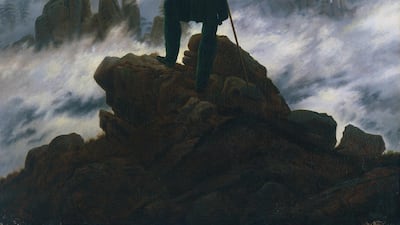There is a quicksand quality to our present moment. The coronavirus pandemic, a resultant wave of cancellations and closures, and the continuing rise in cases and deaths, has loosened the ground from under us.
Most of us have been coping with varying levels of dread these past few weeks. The solidity of our routines, including the ways we work, socialise and move around, has been shaken, and daily life feels a little shapeless. It's easy to feed this anxiety with non-stop news alerts, panicked predictions and pictures of empty supermarkets that sink us deeper into a kind of paralysis.
How can we begin to navigate this knowing that lives will be lost? They say when you are stuck in quicksand, it is best to stay still. Maybe now, more than ever, we should turn to the arts – visual art, literature, music and performance – to help see us through.
Taking heed of a little social-distancing advice over the weekend, I found myself browsing old art books that I hadn’t opened in a while. These were filled with delicate drawings, photographs from faraway places, odd sculptures and illustrations. I kept going – looking through my smartphone’s photo gallery to revisit works from past exhibitions, including those by Vija Celmins, Elena Damiani and Amar Kanwar. I flipped through the poetry of Sandra Cisneros and Ocean Vuong, and discovered music online, old and new.
In times of uncertainty, art can be a steadying force. When we marvel at something, whether it is a painting, a turn of phrase or a piece of music, we’re reminded of the human capacity to create and endure.
Think of the viral videos of people singing from balconies in Italy or the rise of live-streaming concerts, including The Metropolitan Opera's nightly streams of its previous shows. Even pandemic film and fiction, such as Steven Soderbergh's Contagion and Albert Camus's The Plague, are having a resurgence on online booksellers' lists. Time and again, we turn to the arts to connect to each other, to find self-expression or to glean insights during trying times.
Sure, it’s difficult to pry ourselves away from the pull of the 24/7 news cycle or the lure of social media. When it comes to the news, we chase slivers of new information to reassure ourselves that we know what’s going on. These actions mimic the frenzy of our days – constantly checking appointments, deadlines and bills. Our modern lives aren’t built for stillness. Taking a moment to appreciate a form of art, whatever kind you might be drawn to, compels us to slow down and reconsider what we think we already know.
When we engage in art, it is not always about escapism. It is also a practice in patience, such as figuring out the meaning of a poem or a novel, and an exercise in appreciating beauty. There's a passage in Durga Chew-Bose's book, Too Much and Not the Mood, where she describes being "caught off guard" by "a lathery shade of peach on the bottom corner of a painting … as if being reminded that I haven't seen all the colours, and how there's more to see, and how one's colour newness can invalidate all of my sureness". We owe it to ourselves to find that shade of peach that re-energises us.
The economic impacts of Covid-19 are yet to fully unfold. The arts and culture sectors, which are already vulnerable, will inevitably suffer over the coming months, not only in the UAE, but around the world. If you find solace in the arts now, don't forget to return to them once this pandemic ends. Art will sustain our spirit as we make sense of what's happened and try to find our footing again.


